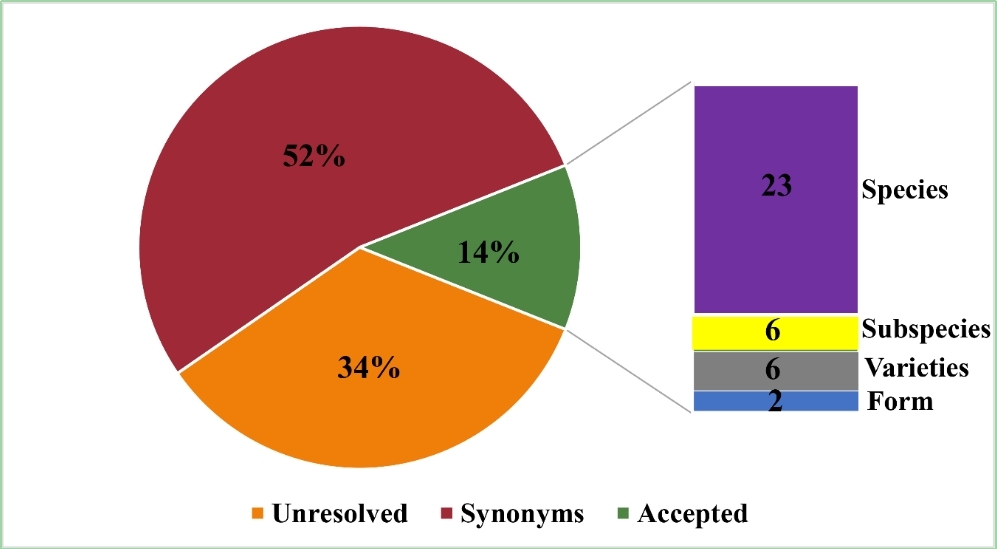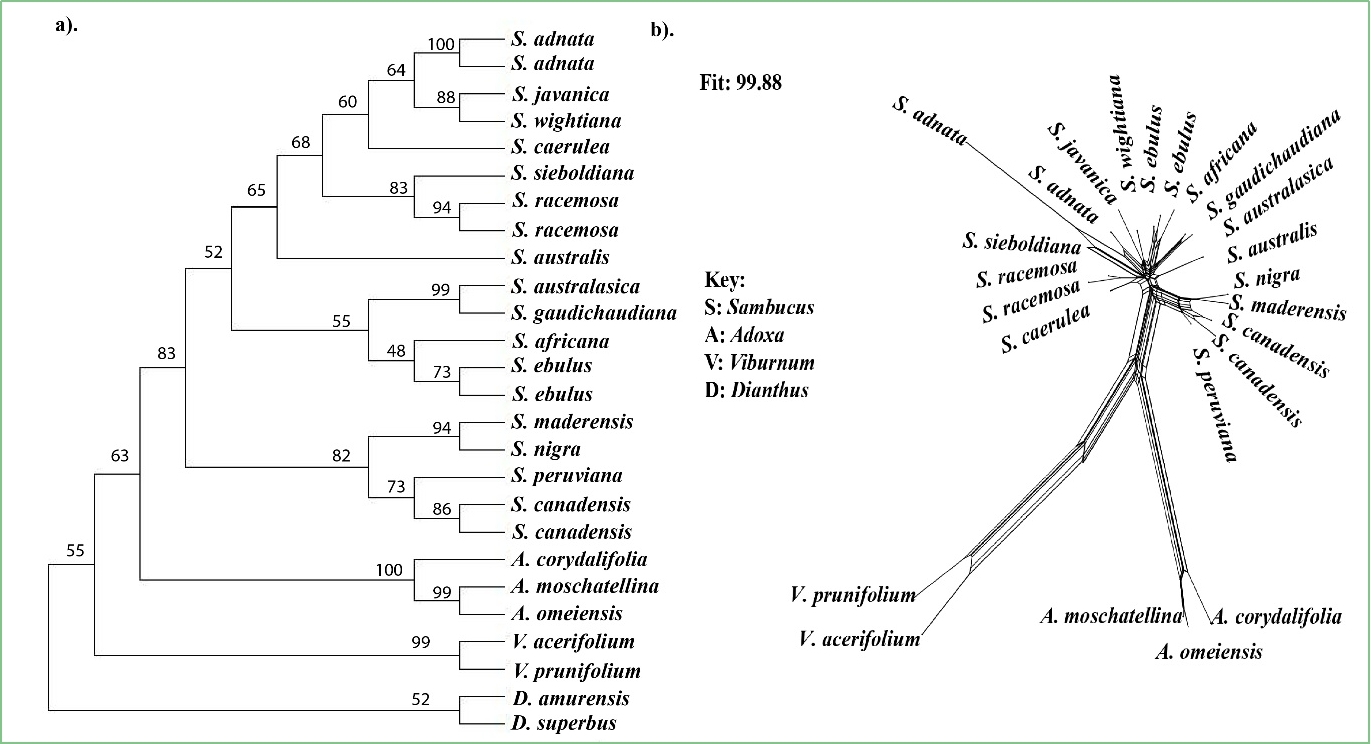Name:HU Guangwan
Tell:
Email:guangwanhu@wbgcas.cn
Organization:Wuhan Botanical Garden
Research Examines the Taxonomic Complexes within the Genus Sambucus
2022-12-30
Sambucus L. is a morphologically diverse group of plants, which comprises approximately 23 accepted species that are mostly deciduous shrubs, perennial herbs or small trees widespread in almost all regions of the world excluding the extremely cold and desert zones. Sambucus species are difficult to be delimitated based solely on morphological characters, thus there is a necessity for taxonomic clarification since the many so-called species are merely horticultural clones.
Researchers from Wuhan Botanical Garden compiled representative views and databases of studies on the taxonomic, nomenclatural treatments and taxa discrimination within Sambucus genus.
Results indicated that enormous intraspecific variations within narrow-ranged populations and their widespread counterparts resulted in taxonomic complications. Sambucus genus encompassed about 37 accepted names including 23 species, six subspecies, six varieties, and two forms (https://powo.science.kew.org, accessed on 30 August 2022). Interestingly, the genus had the highest number of synonyms (52%) and unresolved names (34%), while accepted names were the least (14%). In total, 143 synonyms and 91 ambiguous names were recognized in Sambucus genus.
Intraspecific variations within Sambucus species leads to misidentifications and misapplication of names, resulting in the publication of many putative synonyms, and ambiguous names. Possible interspecific hybridizations experienced between Sambucus species triggered complexity in character evolution. The morphology of Sambucus seeds endocarps were of taxonomic significance and provided highly reliable diagnostic features for species identification. The seed endocarps could thus be used as supporting characters to separate the Sambucus taxa into distinct species because they provided a key for species identification.
The Viburnum, Sambucus, and Adoxa genera were distinct in both the NeighborNet (NN) phylogenetic split network and Maximum Likelihood (ML) analyses. The latter showed that the Sambucus species formed a monophyletic group, and S. adnata, was closely related to S. javanica and S. wightiana.
Generally, defining major boundaries between Sambucus species and their infraspecific taxa is problematic due to possible hybridizations and morphological plasticity. Genetic diversity within Sambucus populations creates a wide genetic base, thus recognition of infraspecific taxa should be done with caution in order to simplify classification and prevent confusions. An integrative approach and comprehensive sampling are needed to relieve taxonomic complications and bring consistency and clarity across the genus. Thus, the further studies could focus on the structure of seed endocarps and molecular traits to improve the systematics of Sambucus genus.
The research titled “Understanding the taxonomic complexes and species delimitation withinSambucusL. (Viburnaceae)” was published in the international journal of Diversity. The work was supported by the National Natural Science Foundation of China and Sino-Africa Joint Research Center, CAS.
The student Emmanuel Nyongesa Waswa is the first author of this work, while the Professor HU Guangwan is the corresponding author. Several other students contributed to the study.

Morphological characters of Sambucus species (1). S. adnata Wall. ex DC (2). S. javanica Blume. (3). S. nigra (a). compound odd-pinnate leaves with serrated margins (b). polychasial cyme, flat-topped inflorescence (c). small rounded berry-like drupes (Image by WBG)

Taxonomic status in the Sambucus genus (Image by WBG)

Synonymizations of Sambucus species (Image by WBG)

Phylogenetic relationship of accepted Sambucus species inferred by (a). Split network computed from uncorrelated P-distance (b). Maximum Likelihood (ML) based on ITS dataset (Image by WBG)